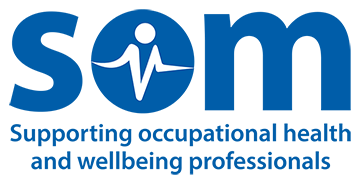SOM with partners wish to build better women’s health in the workplace through a Women’s Health at Work Network. Anyone active in this area, with a life course and intersectional approach, is welcome to join e.g. practitioners, researchers, policy makers, national bodies and charities. The Network started in Autumn 2024 and aims to lead the way to reduce gender disparities in workplace health with evidenced-based workplace health knowledge through an intersectional lens. Intended outcomes include:
Sharing best practice and knowledge as to:
- the impact of this issue - on organisational risks, compliance, the organisation and the wider economy
- the importance of organisational and line manager awareness - through training, webinars and speaking opportunities etc.
- legal and practical case studies and best practice from different occupational sectors
Advocacy and PR - looking at:
- what can be done to improve health in the workplace through a gender based approach
- facilitating policy change - linking with the Women’s Health Strategy, DHSC, charities and policy makers; using tools such as a declaration to garner interest, days of action and PR opportunities
- sustainable policy solutions to support the individual at work such as menopause leave, work uniforms and amenities linked to equality
Gap analyses e.g. as to:
- knowledge of women’s health at work by clinicians such as occupational health (OH) and
- research gaps e.g. as to the impact of ageing; stress; and how to support organisations to be more open to these issues and mental health impacts of specific aspects of the life course
Attracting health professionals:
- to build expertise in managing health risks due to occupation, age, gender, biological, location and ability
- to manage organisational risks with gender-neutral policies/processes and reduce the lack of knowledge in sex and gender health
A webinar was held for International Women's Day in March 2025 (recording here) and a parliamentary reception with CIPD (see article here). Following the reception, SOM with CIPD and 26 other organisations wrote an open letter to the employment minister, highlighting the economic and societal importance of workplace support for women's health and reproductive challenges (see article here). The minutes of the first meeting of the Women's Health at Work Network are here; recording here. Download Women Work and Health: Analysis and recommendations from a roundtable discussion here.
Contact nick.pahl@som.org.uk if you wish to join.
FI The term ‘woman/women’ by the Women’s Health at Work Network represents all women, recognising the diversity within this group, including cisgender, transgender, and gender-diverse individuals. Following the approach in the Women’s Health Economics: 51%, this usage acknowledges the intersectional nature of women’s health, considering how various identities—such as race, socioeconomic status, and disability—shape health experiences and outcomes. While data limitations sometimes restrict this inclusivity, the intention is to address health and workplace challenges affecting all those who identify as women or who experience health issues typically associated with women’s health.

